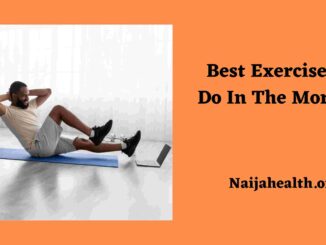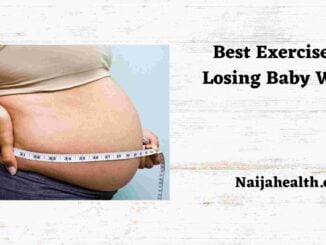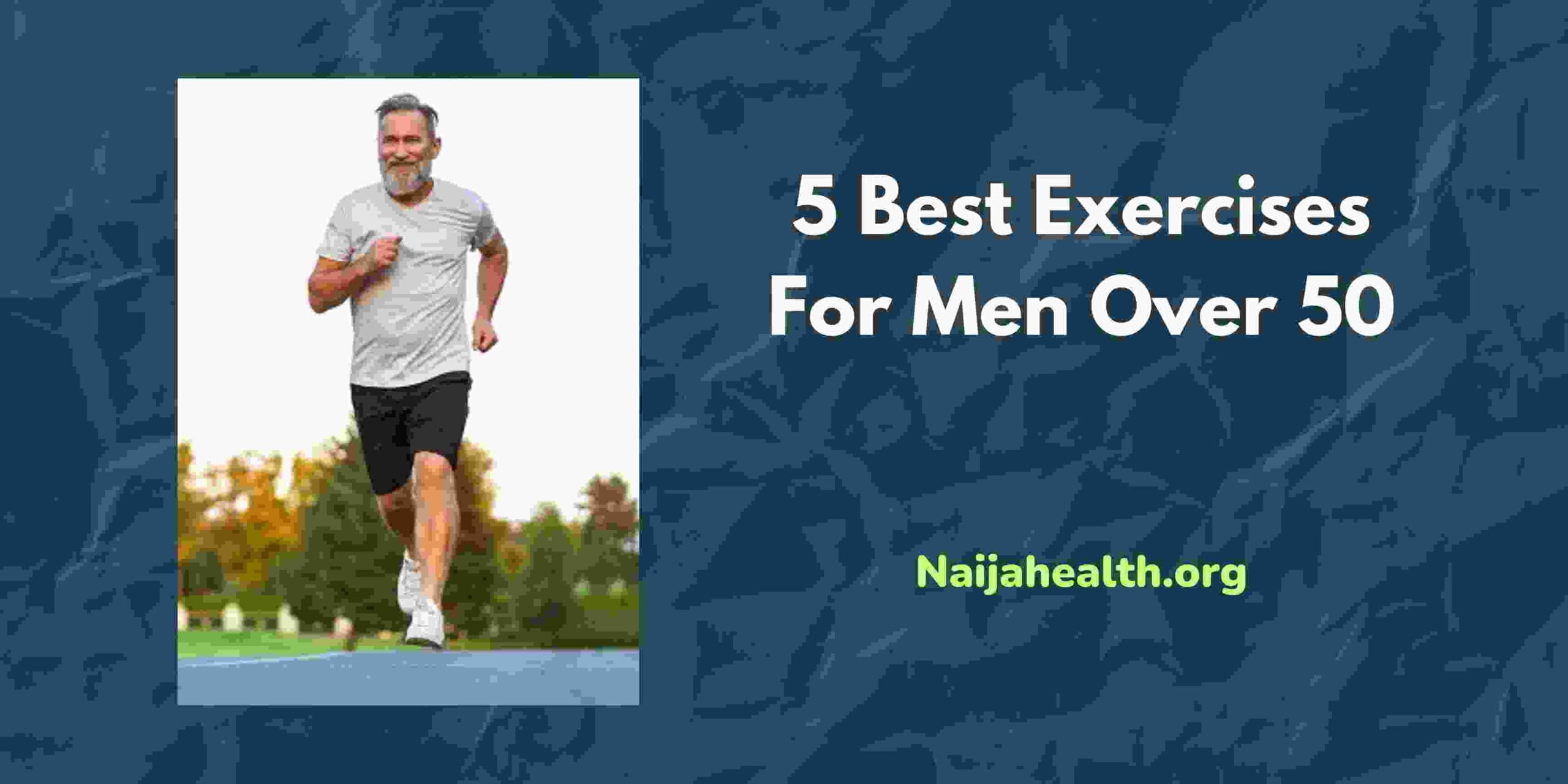
Best Exercises For Full-Body Workout
Full-body workout is a type of exercise routine that engages multiple muscle groups in the body, providing a balanced and complete workout. Unlike exercises that focus on specific body parts or muscle groups, such as individual arm or leg exercises, full body workouts target all major muscle groups in a single session.
One of the main benefits of a full-body workout is its effectiveness. Instead of spending separate days on different body parts, a full-body routine allows you to work all the major muscle groups in one session, making it ideal for those with little or no time, who are looking for a balanced exercise method.
Factors to Consider when Choosing Exercises for a Full-body Workout
When choosing exercises for a full-body workout, it’s important to consider a number of factors to ensure a balanced and effective routine.
Here are some key factors to keep in mind:
- Muscle groups
Aim for exercises that target all major muscle groups in the body, including the upper body (chest, back, shoulders, arms), lower body (legs, buttocks), and core. This ensures that every area of your body receives the right stimulation and development.
- Synthetic motion
Incorporate compound exercises that engage multiple muscle groups simultaneously. Compound movements are more effective because they allow you to work multiple muscles and joints together, promoting functional strength and coordination. Examples include squats, deadlifts, push-ups, and pull-ups.
- Force Balance
Choose exercises that promote balanced strength development. Avoid putting too much stress on some muscle groups at the expense of others. For example, if you include exercises that focus a lot on the chest, such as bench presses, be sure to also incorporate exercises that target opposing muscle groups, like rows or pulls, to maintain balance and prevent muscle imbalance.
- Variation
Includes exercises that provide a wide range of motion patterns and angles. This helps to ensure that different muscle fibers are recruited and stimulated, resulting in balanced muscle growth. Examples include exercises that involve push-ups (e.g. overhead presses, push-ups), pull-ups (e.g. rows, pull-ups), and lower body movements (e.g.: squatting, bending).
- Skill level and progression
Consider your fitness level and choose exercises that are appropriate for your current ability. Beginners can start with simpler variations and gradually progress to more difficult exercises over time. It’s important to listen to your body and avoid exercises that are too difficult or put undue stress on your joints or muscles.
- Availability of equipment
Consider the devices you have access to. Full-body workouts can be designed using only bodyweight exercises, or you can incorporate a variety of equipment options such as dumbbells, resistance bands, or exercise machines. Choose exercises that work with the equipment you have.
- Time and frequency
Consider how much time you can devote to your workouts and how often you can work out. Choose exercises that allow you to complete a full-body workout in the time you have. Also, plan your workout frequency based on your recovery capacity and overall fitness goals.
- Personal Interests and Goals
Finally, consider your personal preferences and fitness goals. If you like some exercises more than others, incorporate them into your routine. If you have specific goals, such as improving cardiovascular health or increasing muscle mass, choose exercises that align with those goals.
10 Best Exercises For Full-Body Workout
Here are the 10 best exercises for a full-body workout, along with a brief description of how to do each exercise correctly:
- Squat
- Stand with feet shoulder width apart.
- Lower your body by bending your knees and pushing your hips back.
- Keep your chest straight and your back straight.
- Lower until your thighs are parallel to the floor or lower.
- Push through your heels to return to the starting position.
- Deadlifts
- Stand with feet hip-width apart, toes under the bar.
- Bend your knees and rotate your hips to grip the bar with your hands shoulder-width apart.
- Keep your back straight and focus on your core.
- Drive through your heels, lift the bar, and stand up.
- Lower the bar, maintain control and good form.
- Pushups
- Start in a high plank position with your arms slightly wider than your shoulders.
- Lower your body by bending your elbows, keeping your body stationary and your back straight.
- Go as low as possible while maintaining proper form.
- Push back to starting position by fully extending your arms.
- Pull up
- Hold a pull-up bar with palms facing you, hands slightly wider than shoulders.
- Focus on your core and squeeze your shoulder blades together.
- Pull yourself up with your back muscles until your chin is above the bar.
- Lower your body with control.
- Lunges
- Stand straight with your feet hip-width apart.
- Step forward with one foot and lower your body until both knees form a 90-degree angle.
- Keep the front knee just above the ankle and the back knee directly on the floor.
- Push through your front heel to return to the starting position.
- Repeat on the other leg.
- Bench press
- Lie down on a flat bench with your feet flat on the floor.
- Grasp the barbell with your hands slightly wider than your shoulders, palms facing you.
- Lower the bar toward your chest, keeping your elbows at a 45-degree angle.
- Press the bar down until your arms are fully extended.
- Weight control throughout the movement.
- Shoulder press
- Sit on a bench with a backrest, holding weights at shoulder height.
- Press the dumbbell overhead until your arms are fully extended.
- Lower the dumbbells to the starting position.
- Keep your core active and avoid arching your back during the move.
- Bent-over rows
- Stand with feet hip-width apart, knees slightly bent.
- Keep your hips straight and grab a barbell or dumbbell with your palms facing down.
- Pull the dumbbells down to your chest while squeezing your shoulder blades together.
- Lower weights with control.
- Keep your core active and avoid excessive swaying or arching.
- Plank
- Start in a push-up position with your forearms on the floor.
- Keep your elbows directly under your shoulders and your body in a straight line from head to heels.
- Engage your core and hold the position for a specific amount of time.
- Avoid sagging or elevating your hips.
- Russian Twist
- Sit on the floor with knees bent and feet flat.
- Lean back slightly while keeping your back straight and your center of gravity active.
- Grip your hands or hold weights in front of your chest.
- Turn your torso to the side, touching the ground with your hands or your weight.
- Swing to the other side, maintain control and engage your obliques.
FAQs
Are full body exercises suitable for beginners?
Yes, full body workouts can be suitable for beginners. The key is to start with exercises that are appropriate for your fitness level and progress gradually as you become more comfortable and stronger. Seek advice from a fitness expert to design a suitable full-body workout routine for beginners.
How many times a week should I do a full body workout?
Your adequate workout frequency depends on many factors, including your fitness level, recovery, and overall goals. For starters, 2-3 workouts per week with alternating rest days can be a good starting point. As you progress, you can increase the frequency to 3-4 sessions per week. Listen to your body and adjust accordingly.
Can I incorporate cardio into my full body workout routine?
Yes, you can incorporate cardiovascular exercises into your full-body workout routine. Consider adding exercises like jumping rope, sit-ups, or rock climbing between strength exercises to get your heart rate up. Alternatively, you can set aside separate days for cardio or include specific cardio on non-strength days.
How long should a full body workout last?
The duration of a full-body workout can vary depending on personal preference and available time. Typically, a full-body workout can last anywhere from 45 minutes to an hour. However, you can adjust the duration depending on your fitness level and the amount of exercise you include in your routine.
Can I use resistance bands or bodyweight exercises for a full body workout?
Absolute! Resistance bands and bodyweight exercises can be great options for a full-body workout. Resistance bands provide resistance throughout the movement, helping to build strength and muscle. Bodyweight exercises, such as squats, push-ups, and lunges, can effectively target major muscle groups without the need for additional equipment.
How can I progress in my full body workout routine?
Progress can be made in a full-body workout routine by increasing resistance (weight), adding more repetitions or sets, shortening rest periods, or incorporating more difficult exercise variations. Gradual overload and progress are the keys to continuous progress and adaptation.
Is it necessary to warm up before doing a full body workout?
Yes, a warm-up before a full-body workout is essential. A good warm-up will help prepare your body for your upcoming exercise by increasing blood flow, increasing body temperature, and relaxing joints and muscles. It can include dynamic stretching, light cardio, and range-of-motion exercises that target the muscles you’ll be working on.
How important is nutrition to support a full-body workout?
Nutrition plays an important role in supporting total body training and overall fitness goals. Sufficient protein, carbohydrates, and healthy fats are needed to fuel your workouts, aid in muscle recovery and growth, and optimize performance. Hydration is also essential to maintain energy levels and prevent dehydration during exercise.
Conclusion
Proper form and technique are key to maximizing the effectiveness of these exercises and minimizing the risk of injury. Seek advice from a fitness professional if you’re new to these moves to make sure you’re doing them correctly.
Don’t forget to include elements like warm-up, nutrition, and progress into your full-body workout routine. A good warm-up will prepare your body for exercise, and good nutrition will support energy levels, muscle recovery, and overall performance. Gradually increasing the intensity or difficulty of exercises over time will help you progress and continue to challenge your body.



Be the first to comment